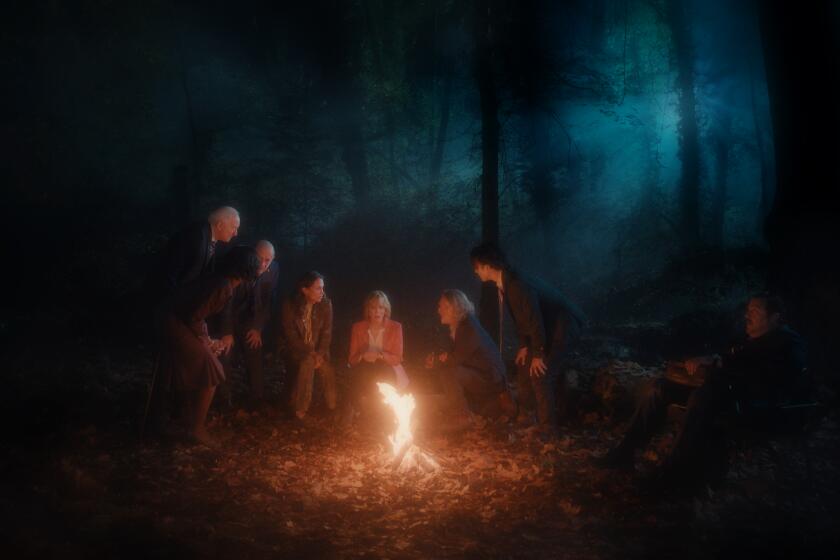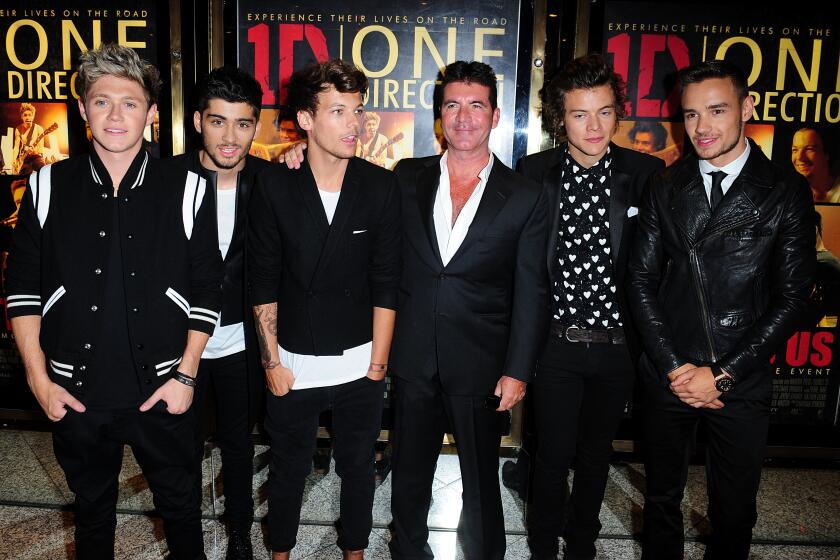TV BROADCASTERS FIGHT FCC PROPOSALS : BATTLE BEGINS OVER UHF SPECTRUM USE
Wednesday morning, members of Congress and federal regulators are expected to get a firsthand look at what broadcasters hope will be the television picture of the 21st Century.
If all goes well, a special transmitter at Washington’s WUSA-TV Channel 9 will begin beaming videotape of the 1984 Olympic Games to special receivers located in the Capitol and the offices of the Federal Communications Commission.
It will be the capital area’s first public demonstration of High Definition Television, or HDTV, an emerging technology that produces a picture so crisp and detailed that engineers say it seems more like a high-grade photograph than television.
“When you see it, everybody just says, ‘Gee whiz. Wow!’ ” said Ben Crutchfield, an official in charge of the project with the National Assn. of Broadcasters. “People just gape at the picture.”
Which is not to say that the broadcasters are entirely disinterested about the matter. The demonstration is only the latest phase of a sophisticated lobbying campaign aimed at dissuading public officials responsible for telecommunications policy from assigning valuable frequency space normally reserved for television broadcasts to other uses.
The broadcasters are seeking to head off proposed FCC regulations granting more space on the UHF spectrum to the operators of two-way mobile radios, such as fire departments, police forces and delivery services.
The NAB, which represents more than 4,800 radio stations and 900 television stations, argues that the regulations not only would interfere with current UHF broadcasts but also would take up space needed for the future airing of HDTV signals. The broadcasters hope that the demonstration will persuade regulators and lawmakers that HDTV is no pipe dream, but a reality.
“You saw what happened with compact discs,” said Crutchfield, citing the recent craze for the high-tech audio product. “I wouldn’t be surprised if a similar thing happened with high-definition technology.”
In a speech last month, Edward Fritts, NAB president, contended that the FCC regulations, if finally approved, would “preclude America’s broadcasters from developing HDTV as a free over-the-air service to the nation.
“It is a fact that consumers will be able to enjoy this improved broadcast technology in the near future,” he said. “The question is whether the FCC will let them.”
But to others, including the growing numbers of users of mobile radios, the broadcasters’ argument is yet another example of the television industry’s efforts to hog the airwaves for themselves, including spectrum space that they cannot now use and may not even be able to use in the future. Meanwhile, they say, two-way radio users badly need the additional spectrum space in numerous major cities.
John Lane, a Washington attorney who has represented several public safety agencies, said that the FCC traditionally has been “overly generous in granting spectrum for broadcast use and niggardly in granting spectrum for other uses. . . . It is a fatuous waste of one of our country’s most valuable resources.”
There are already an estimated 7 million mobile radios--not counting those used by boaters--and the number is growing at roughly 10% annually, according to Travis Marshall, a senior vice president at Motorola Inc., a leading supplier of mobile radio systems. “As you look out in the future, you find that what we have (in radio spectrum space) is not enough,” he said.
The FCC is expected to make a final decision on the matter later this year. But whichever side wins, experts say the controversy is an example of the increasingly familiar fight in telecommunications policy for the limited spectrum space on desirable radio frequencies. Just last summer, for instance, a bitter row took place over the FCC’s allocation of part of the UHF-TV spectrum for cellular telephone service.
“There’s no question that the needs for the spectrum are very, very large,” said Thomas Stanley, the FCC’s chief engineer and the official in charge of the staff’s review of spectrum allocation. Alluding to the potential need for space for HDTV, he said, “This is the first time that future broadcast needs have been brought into the discussion.”
So far much of the development of HDTV has taken place in Japan, where the government broadcasting company and other firms have been at work on the technology since the late 1960s, NAB’s Crutchfield said. This week’s demonstration was put together with the help of Japanese engineers and largely uses Japanese equipment, although the special transmitter and the antennae were built by two small American firms.
Currently, HDTV technology requires special transmitting equipment, as well as special television sets which can receive and “scan” the 1,125 horizontal lines that make up the picture. This is roughly double the number of lines conventional television sets are able to scan, thus enabling HDTV television sets to show a picture that is literally twice as clear as conventional television sets can show, engineers say.
By the 1990s, the Japanese are expected to begin producing for consumer markets special VCRs, videocassettes and television screens using HDTV technology, industry experts say. The use of HDTV in cable television is not expected to be far behind. The big unknown is whether HDTV will ever be piped into American homes through the airwaves.
“It’s a tough economic question, because you have some 150 million TV sets, and the broadcast stations and the networks have a tremendous investment in equipment,” said Eb Tingley, a vice president with the Electronic Industries Assn. “If you’re willing to set up a whole new system, that’s fine, but that’s rather expensive.”
A main problem--and the cause of much of the current controversy--is that even today’s most advanced HDTV technology requires more space on the spectrum than conventional television technology. The Japanese HDTV system, for instance, requires roughly 8 megahertz of band space for transmission, while a normal television channel uses 6 megahertz of space.
For the demonstration this week, the NAB experimenters received a special FCC license to broadcast their signal over Channels 58 and 59.
In essence, the broadcasters want the regulators to save them enough frequency space for when HDTV broadcasting becomes a mass consumer possibility, as they expect it will by the late 1990s. So they have launched a campaign to persuade the FCC to rethink proposed rules giving two-way radios the use of as much as six additional channels in eight major metropolitan areas, including Washington.
The initial regulations were proposed in 1985, after several years of study of how to meet the growing spectrum needs of two-way radio users, said the FCC’s Stanley. Currently, these users have access to various bands, including some of the lower and upper parts of the UHF spectrum. The premise of the new FCC proposal is that there are additional channels that land radios could use without interfering with current UHF broadcasts, commission staffers said.
In Washington, for instance, the FCC is proposing that TV channels 36 and 30 or 39 and 35 be used for two-way radio transmission--a move that staffers said should leave viewers of UHF broadcasts in the area “completely unaffected.”
Stanley stressed, too, that the technology is still “an evolving concept.”
Within the past five years, he said, HDTV developers have been able to narrow the amount of band space needed to telecast from as much as 40 megahertz to 8 megahertz. “Who is to say it’s going to stop at 8?” Stanley asked, saying that the proposed rules should not necessarily preclude the future development of HDTV broadcasting in the United States.
More to Read
The biggest entertainment stories
Get our big stories about Hollywood, film, television, music, arts, culture and more right in your inbox as soon as they publish.
You may occasionally receive promotional content from the Los Angeles Times.










